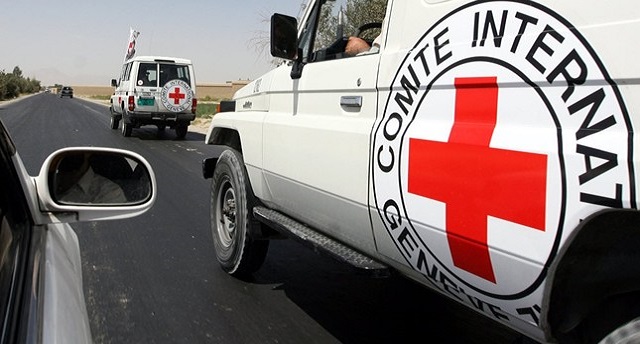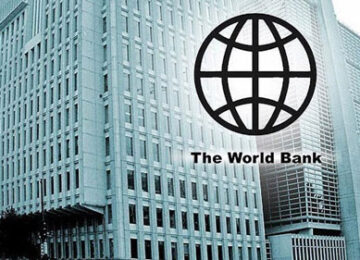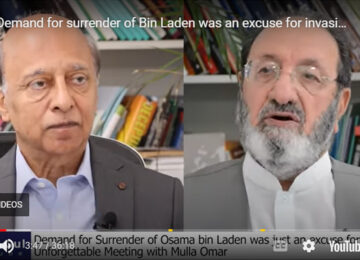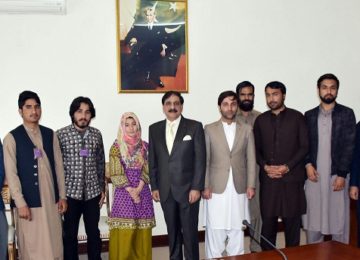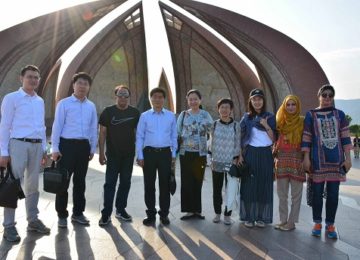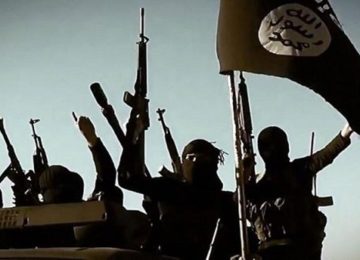October 13, 2017
The International Committee of the Red Cross (ICRC) has said it has “no other choice but to drastically reduce its presence and activities in Afghanistan, in particular in the north of the country.” The decision follows three attacks on its staff in less than a year, including the worst suffered by the organisation worldwide in decades. The ICRC has been working with victims of the Afghan conflict since 1979 and is one of the most widely respected organisations working in Afghanistan. AAN’s Kate Clark looks at why it has found itself unable to operate in parts of the Afghan north and what that says about the Afghan conflict and the ability of neutral, humanitarian organisations to work.
“This is a difficult moment for the ICRC and the staff,” said head of delegation, Monica Zanarelli, announcing the drawdown. “After 30 years of continuous presence in the country, we are reducing our presence and operations.” The ICRC is laying off staff and closing two of its offices, in Faryab and Kunduz provinces, while its sub-delegation in Mazar-e Sharif will be “seriously downsized”
The impact of this drawdown will be keenly felt. Those three ICRC offices cover nine provinces in the north and north west of Afghanistan. Activities run out of the Mazar office will now be limited to the ICRC’s Re-establishing Family Links programme (tracing separate family members, facilitating phone calls to detainees and arranging family visits) and cooperation with the Afghan Red Crescent Society. The orthopaedic centre in Mazar, which treats those who have lost arms and legs and need prosthetic limbs as well as those with other disabilities, will remain open for now, but the ICRC is looking for others to run it. All other activities out of Mazar will be stopped, including the ICRC’s assistance programmes.
At the government’s Sheberghan hospital in Jawzjan province which the ICRC has supported until now, ongoing projects, such as the rehabilitation of the emergency ward and delivery of already promised medical supplies, will be completed, but after that, ICRC spokesperson Thomas Glass told AAN, “we will no longer support the hospital, at least not in the same capacity as we have until now.”
Glass said it was hard to put a number on those who will be affected in north and north-western Afghanistan by the ICRC’s reduced presence. “But taking into account the different activities we had,” he said, “the beneficiaries can be counted in the hundreds of thousands.” The ICRC is also reviewing its activities in the rest of the country.
Three attacks in nine months
It has been a nasty, gruelling nine months for the ICRC in Afghanistan. On 19 December 2016, a Spanish member of staff, Juan Carlos, was abducted as he travelled from Mazar-e Sharif to Kunduz and held hostage for a month. Then, in February of this year, armed men attacked an ICRC aid convoy in the Qaduq area of Qush Tepa district of Jawzjan province, killing six Afghan staff and abducting two others. The convoy had been bringing much needed livestock feed to rural communities. It was only after seven months that the two hostages were released, on 5 September 2017. All ICRC operations had been on hold following the February attack, but had resumed gradually over the summer.
Yet, just six days after the hostages were freed, on 11 September 2017, a Spanish physiotherapist, 38 year old Lorena Enebral Perez, described by Zanarelli as “energetic and full of laughter,” was killed. Perez helped people who had lost legs or arms or had other forms of disability to learn to stand and walk or feed themselves again. She was targeted by one of the patients, a man who had suffered polio as a child and had been coming to the rehabilitation centre for 19 years, ever since he was two years old. He pulled out a pistol apparently concealed in his wheelchair and shot her. “This was the heart of the ICRC,” said Glass, “one of the safest places in Afghanistan.”
“Let’s be very clear,” said Zanarelli, “We are not leaving Afghanistan. Limiting our staff’s exposure to risks is our focus, all the while assisting the people affected by the conflict the best way we can.” Even so, the closing down of the ICRC’s centres in Kunduz and Faryab and scaling back its work in Mazar will affect many. Without the ICRC, the polio victim-murderer would have had no other place to find treatment and help. There are many like him who will now have no access to treatment. The closures show just how difficult parts of Afghanistan have become for humanitarian organisations to work in.
A long history of working in Afghanistan, now under threat
The IRCR has been working in Afghanistan for decades. The Soviet-backed PDPA government finally allowed it to start operations on Afghan soil in 1987, although by then, it had already been treating Afghan victims of the conflict in Pakistan for eight years. It has been one of the most tenacious of agencies, maintaining a presence through the worst of the civil war and the Taleban era (1).
These are not the first attacks on the ICRC since 2001. Indeed, the murder of ICRC engineerRicardo Munguia in Uruzgan by the Taleban in March 2003 heralded the start of the uprising, (2) its sudden brutality a shock to those who thought and hoped the conflict was over. On 29 May 2013, the ICRC was attacked again, its office in Jalalabad targeted by suicide bombers who killed an unarmed guard and wounded a delegate before the attack was suppressed by Afghan security forces (read AAN analysis here). That attack was not claimed. The ICRC scaled back its activities after both attacks, before gradually ‘growing them back’ again. This time, however, ICRC spokesperson in Kabul Thomas Glass told AAN, it was not a temporary move. “This is not a short-term decision,” he said. The scaling back has been driven by both the frequency of the recent attacks and their severity. The attack in Jawzjan attack (six killed and two abducted) was the worse single assault suffered by the ICRC globally in recent decades. (3)
There is no other organisation which does what the ICRC does during wartime (read about its mandate in Afghanistan here and worldwide here). It has working relationships with all parties to the conflict, including insurgent groups. It brings the dead bodies of combatants of all stripes home for burial and provides medical care to both civilians and wounded combatants. It traces and visits security detainees, keeping them in touch with their families and offers rehabilitation for those who have lost limbs or have disabilities. It also privately advises, cajoles and castigates all sides in the conflict in order to prevent violations of the laws of armed conflict. It acts as a neutral intermediary, enabling humanitarian action to take place across front lines. It is specifically protected by the Geneva Conventions.
The ICRC does not employ armed guards, instead relying on its reputation for neutrality, the goodwill and respect of the public and on talking to all parties to the conflict to ensure the safety of its staff. The Taleban speak highly of it. Possibly this is the only international organisation they have such words for. After the Jawzjan attack, for example, the Taleban said the ICRC’s activities were “invaluable for the poor and needy Afghans,” and in 2012, the movement also condemned the murder of a British ICRC delegate in Pakistan, stressing that the ICRC was “an impartial organization [that] works throughout the world for the needy, helpless and oppressed people.”
Yet, in the last few years, the fragmentation of the conflict, in particular, broken or unreliable chains of command, has made it especially difficult and dangerous for the ICRC and other humanitarian organisations to work in Afghanistan. The Taleban as an organisation may cooperate with the ICRC, but its writ does not travel to all its commanders on the ground. Moreover, there has been a proliferation of armed groups, including those of a criminal bent and those purporting to fly a Daesh flag.
The Jawzjan attack was a case in point. The likely culprit was Qari Hekmat, an ethnic Uzbek with a long history as a Taliban commander and up to 200 men under his command. The provincial governor, Aziz Latifi claimed he had shifted his allegiances to Daesh, but even if he had, financial gain, rather than any change in ideology seemed the likely motivation for the attack and abductions. Although the Taleban hierarchy condemned the assault on the convoy, they could not stop their field commander targeting the ICRC or ensure the swift freeing of the hostages. (4) When it is unclear who answers to whom and who is actually in control, it is impossible to get reliable security guarantees, which means ICRC staff cannot work safely, as Glass explained:
There is a fragmented security landscape, especially in the north, with different armed groups and increasing criminality. It’s a grey zone, extremely difficult to read and assess the situation. In Jawzjan, we had all the security guarantees, we were confident that we could do the distribution in this area. We were very surprised when we suffered the attack. This weighed heavily on our decision. It’s increasingly difficult, given the security environment in some areas, knowing who is who.
After the Jawzjan attack, the Taleban Health Commission said it was grieving for the six murdered workers. It also called on the ICRC to “refrain from suspending their services as the Afghan nation is need of humanitarian aid and health services more than ever before.” It promised that the Taleban would “take all necessary steps for your security in areas under our control.” It should, of course, be the Afghan government ensuring security, but in parts of the north neither the government or insurgent leadership can do that. In such circumstances, unarmed humanitarians cannot work, despite the obvious need from the people they would like to serve.
The need for humanitarians
The ICRC itself has described the cost of the war to Afghans:
Widespread conflict continues to devastate the lives of Afghans in many districts and villages. The threat of civilian casualties, internal displacement, and insufficient access to medical care, are only some of the challenges. All of them occur against a backdrop of a splintering of armed groups, night raids, air strikes, suicide bombing, and the laying of improvised explosive devices. The expansion of the conflict to previously quiet areas has increased people’s difficulties and left whole communities trapped between the warring parties.
The spread and nature of the conflict makes the need for humanitarian operations greater than ever, but it is not just the ICRC facing attack. As AAN reported last year, health facilities and workers, also specifically protected under the Geneva Conventions, are under increasing threat, abused by all parties to the conflict. The situation has worsened this year, with the number of incidents already double last year’s (41 in 2016, 86 as of the end of August). Dominic Parker, head of the United Nations Office for the Coordination of Humanitarian Affairs (OCHA) in Afghanistan told The Guardian that the intensification of the conflict was seemingly going hand in hand with a further erosion of respect for obligations under international humanitarian law by all parties to the conflict. “Health facilities have repeatedly been abused as fighting positions,” he said, “and earlier this year armed groups forced health clinics to close, depriving half a million people from access to healthcare.”
According to a recent report by the independent research organisation, Humanitarian Outcomes, Afghanistan suffered more attacks on humanitarian workers than any country in the world except South Sudan. (Attacks in Syria were fewer, but more lethal. In Afghanistan, the most common type of attack is kidnap, followed by shooting. In Syria, it is aerial bombardment.)
Most NGOs and international humanitarian organisations, including the ICRC, have already modified their operations to try to protect staff while continuing to reach the most vulnerable. The fact that the ICRC, with its reputation for neutrality and service built up over decades, has had to accept that it can no longer work safely in parts of Afghanistan is deeply worrying. It is a sign of just how messy and brutal the conflict has become.
References
(1) The ICRC was forced by the Taleban, along with all other aid and humanitarian organisations, to leave Afghanistan following the 9/11 attacks. A handful of international staff from the Kabul office, including the head of its orthopaedic rehabilitation programme since 1992, Dr Alberto Cairo, relocated to Jabal al-Saraj, in the Northern Alliance-held part of the Shomali. He drove back to Kabul the day the Taleban fled the capital and resumed his work there.
(2) Witnesses said the gunmen who ambushed Munguia’s vehicle telephoned their commander, the notorious, late Mullah Dadullah. Having spared his Afghan colleagues, they wanted to confirm whether they should kill the foreigner working for the ICRC. The witnesses reported that Dadullah gave the order to shoot Munguia. Dadullah was one of tens of thousands of Afghans to have a prosthetic limb; possibly his had been fitted by the ICRC, although Dr Cairo (see footnote 1) told this author he could not be sure as many combatants gave false names when receiving treatment.
(3) Other comparable attacks are far and few between. They would include, in 1996, the killing of six ICRC workers in Chechnya and in the Democratic Republic of Congo where again six workers were killed, in 2001.
(4) For a look at some of the dynamics of the northern insurgency, see AAN reporting on non-Pashtun Taleban in the north, in Faryab and Sar-e Pul, and Jawzjan and on those aligning themselves with the local chapter of Daesh, the Islamic State in Khorasan Province (ISKP) here and on what can be a very confused picture as to allegiances on the ground.
By Special Arrangement with AAN. Original link.
Disclaimer: Views expressed in the article are not necessarily supported by Afghan Studies Center.



